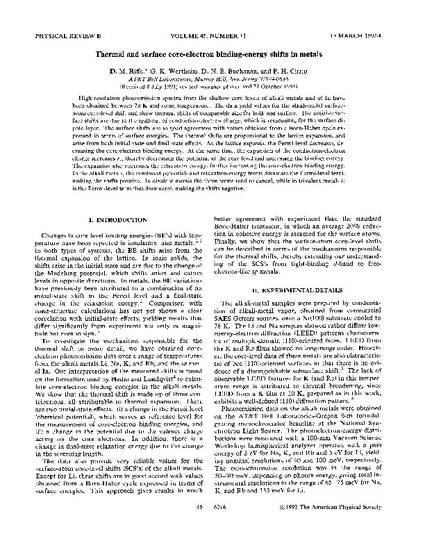
High-resolution photoemission spectra from the shallow core levels of alkali metals and of In have been obtained between 78 K and room temperature. The data yield values for the alkali-metal surface-atom core-level shift and show thermal shifts of comparable size for bulk and surface. The positive surface shifts are due to the spill-out of conduction-electron charge, which is responsible for the surface dipole layer. The surface shifts are in good agreement with values obtained from a Born-Haber cycle expressed in terms of surface energies. The thermal shifts are proportional to the lattice expansion, and arise from both initial-state and final-state effects. As the lattice expands, the Fermi level decreases, decreasing the core-electron binding energy. At the same time, the expansion of the conduction-electron charge increases rs, thereby decreasing the potential at the core level and increasing the binding energy. The expansion also decreases the relaxation energy, further increasing the core-electron binding energy. In the alkali metals, the combined potential- and relaxation-energy terms dominate the Fermi-level term, making the shifts positive. In divalent metals the three terms tend to cancel, while in trivalent metals it is the Fermi-level term that dominates, making the shifts negative.

Published by American Physical Society in Physical Review B. Publisher PDF is available for download through link above.